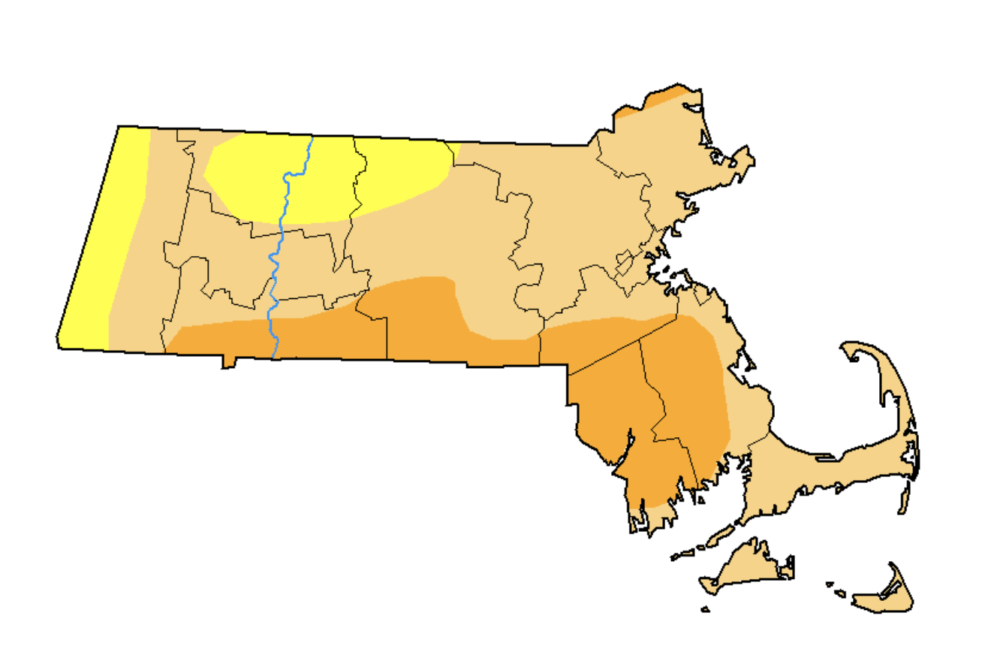Advertisement
Parts Of Mass. Experiencing 'Severe' Drought
About a quarter of Massachusetts is now experiencing a severe drought that threatens crops, diminishes air quality, makes trees more susceptible to insects and could lead to widespread water conversation measures.
The U.S. Drought Monitor reported Thursday morning that while all of Massachusetts is at least abnormally dry, about 60% is experiencing a moderate drought and another 25% — most of Bristol and Plymouth counties and the southern parts of Norfolk, Worcester and Hampden counties — is going through a severe drought.

"In the Northeast, anomalously warm temperatures and below-normal precipitation during the past 90-day period have led to deterioration in drought-related conditions in parts of New England — including Massachusetts where state officials declared a Level 2 drought on August 14 for all regions of the state," David Simeral of the Western Regional Climate Center wrote in the Monitor's weekly summary. "Average temperatures for the week were 2-to-10 degrees above normal. According to the National Centers for Environmental Information (NCEI), the Northeast Climate Region experienced its warmest (+4.6° F anomaly) July on record."
When a Level 2 drought is declared, the state's drought management plan calls for residents and businesses to minimize overall water usage, to limit outdoor water to use of a hand-held hose or watering can one day a week only after 5 p.m. or before 9 a.m., and for municipalities to adopt limits or prohibitions on things like filling swimming pools and washing cars. The state's Drought Management Task Force is expected to meet in early September.
Massachusetts experienced a significant drought in 2016 when at least a portion of the state was in a drought for 48 weeks from June 7, 2016 until May 2, 2017. According to the National Integrated Drought Information System, the most intense period of that drought was the week of Sept. 13, 2016 when more than 52% of the state was categorized as being in an "extreme drought."
The 2016-17 drought was blamed for contributing to wildfires, an outbreak of gypsy moths, higher rates of ant infestation, smaller than usual apples, loss of crops, a shortage of cattle feed, and an elevated population of mosquitoes able to carry West Nile virus.